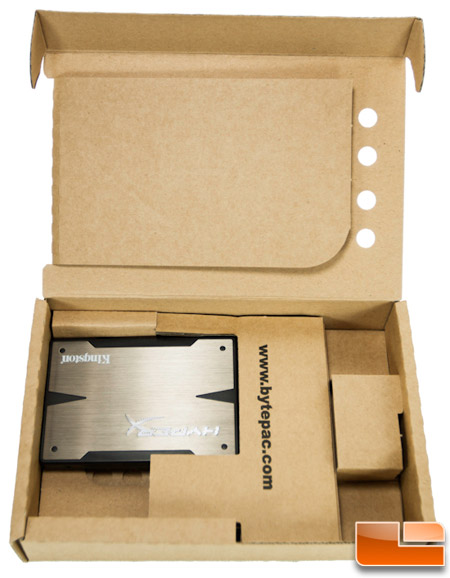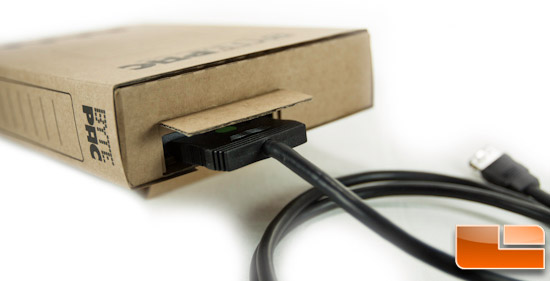Convar BytePac Eco-Friendly Paper Hard Drive Enclosure Review
Setup, Use, And Final Thoughts
To get everything set up on the Convar BytePac couldn’t really be any easier. It’s very intuitive and fits together nicely.

For a 3.5″ drive, simply remove the sleeve, open the box, remove the loose 2.5″ drive spacers within and drop the drive right in. The top folds back down and has an additional flap to make sure everything is snug. Close it up, plug in the cables and off you go. When not in use, you can use the box the enclosures shipped in to store on a shelf like books.

For a 2.5″ drive, setup is the same except the spacers are left in to hold the drive in place although you lose the benefit of direct airflow from the vent holes on top at the opposite end.

The under flap we referenced earlier folds back and locks into place to prop the drive up and allow for air to circulate underneath, keeping the temperature at a reasonable level. All of this is passive of course, with no fans present and we found that none were needed. During testing, on the bare drive the max temperature we reached while running continuous tests with HD Tune Pro was 37C based on the S.M.A.R.T. data presented in the benchmark tool. While inside the BytePac, the max temp was 41C which isn’t very much of an increase so we feel pretty good about not having to be concerned about heat being an issue. beside favorable thermal properties, the cardboard is rather resilient and does just as good, if not better, a job at absorbing shock than most plastics. While cardboard is a paper product and susceptible to damage as a result of moisture (i.e. spills), so are the electronics found within more traditional enclosures so it’s a wash there (no pun intended). Really, other than vanity, we can’t find a practical reason to choose a more traditional enclosure over the BytePac.
For those that go out of their way to minimize impacts on the environment, this is a no-brainer. According to Convar, the average hard drive plastic case is produced using 350ml of crude oil. Cardboard is also much more cost-effective in terms of manufacturing so the cost for the kit we reviewed is very reasonable at $55.93. Frankly, the cables alone are worth that much and are all covered by a generous 5-year warranty. Overall, it’s very innovative, works as advertised, and we really have nothing negative to say about our experience with the BytePac.
Legit Bottom Line: If you need an external drive enclosure, whether you strive to minimize your ecological footprint or not, the BytePac from Convar is a unique solution with no drawbacks that we could find as compared to a more traditional enclosure.

Comments are closed.